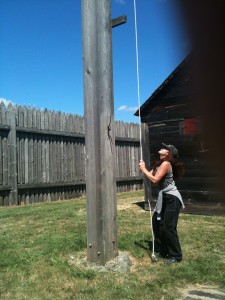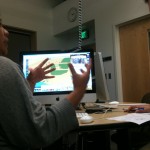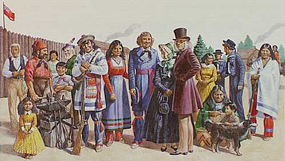
Dene Grigar rings the bells at the Fort in preparation of recording its sound for the Fort Vancouver Mobile app
Members of the FVM team––Grace, Vern, and I––spent the morning at the Fort and Village shooting photos of household and personal objects the villagers would have used in their everyday lives. We began with a series of shots with the objects laid on the table as an artifact, with the catalog number showing. We then worked with the Fort’s archivist by having her move these objects to House 2 where we photographed them again in context to their use. In other words, the rum bottle was shot on the small wooden table in the house, the toy hatchet on a tree stump, etc. In “A Villager’s Tale,” 10 of these items will appear in the episode entitled “Home at the Village.” In “The Grand Emporium of the West,” which is the special app we are making for 6-8th graders as part of the Verizon-NEH project, they will be part of the “lost and found” game.
Later in the afternoon, we captured the sound of the bell tolling. This sound was part of the Villager’s daily life in that the bell called them to work, to lunch, to home each day. So, visitors to the Village using the FVM app will hear them when they reach the episode entitled, “Our Normal Work Day.”
Next up: The photomontage series for each of the four episodes. . .










